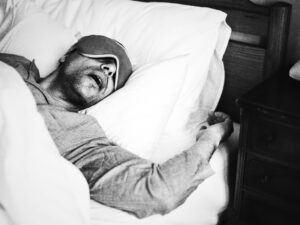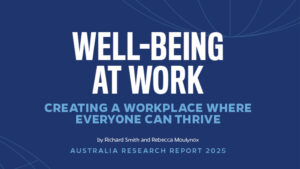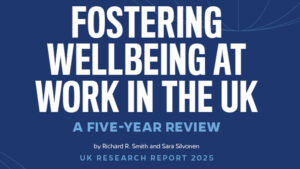A recent study reveals that leaders who display “sleep leadership”—showing genuine support and encouragement for healthy sleep—improve employee sleep quality and, as a result, enhance workers’ ability to pursue goals and control impulses at work.
Why it matters:
Poor sleep isn’t just a personal health issue; it costs organizations billions in lost productivity and risk.
- U.S. economic loss due to insufficient sleep: Over $411 billion a year
- Individual productivity loss: at least $1,967 per employee per year
While most well-being programs focus on individual self-care, this research shows leaders can spark positive changes in employee sleep—and work performance—through targeted, supportive behaviors. In sum, leadership support for sleep may break the cycle of unhealthy work-home spillover.
How we know:
Analysis of 663 active-duty U.S. Army soldiers over a two-wave (4-5 month) field study, using validated surveys to measure “sleep leadership,” sleep quality and quantity, and self-regulatory work outcomes. Mixed-effects modeling and mediation analysis showed that supervisor support for sleep led to improvements in sleep health, which then predicted improved job-related goal pursuit and impulse control. Effects were independent of standard leadership qualities.
What the researchers found:
- Soldiers reporting higher sleep-specific support from their immediate supervisors experienced measurable improvements in sleep quality over 4–5 months.
- These gains in sleep quality led to reduced workplace impairment, less anger-related behavior, and lower risk-taking.
- The positive effects went beyond general leadership support, highlighting the unique impact of “sleep leadership.”
- Sleep leadership works through both encouraging healthier sleep, e.g., voicing the importance of sleep, and enabling it, e.g., adjusting schedules, discouraging late-night email).
What this means:
- For managers: Small, daily actions like proactively discussing sleep, planning schedules to allow for rest, or discouraging “badge of honor” overnight work can yield measurable improvements in employee health, focus, and behavior.
- For HR leaders: Incorporate “sleep leadership” training into existing well-being, resilience, and supervisor development programs.
- For organizations: Addressing sleep should be positioned as a leadership responsibility—not left solely to individual wellness efforts.
Now what?
We suggest doing these:
- Train leaders to ask about and encourage healthy sleep habits during regular check-ins or performance reviews.
- Adjust operational schedules to ensure employees get adequate rest, especially before intensive tasks or after stressful periods.
- Set clear expectations about after-hours communications and napping policies to reinforce a culture of rest.
- Pilot “sleep leadership” initiatives in high-risk or shift-based teams and track changes in absenteeism, safety incidents, and performance.
For more, see: Gunia, B. C., Adler, A. B., Bliese, P. D., & Sutcliffe, K. M. (2021). How are you sleeping? Leadership support, sleep health, and work-relevant outcomes. Occupational Health Science, 5, 563-580. URL: https://psycnet.apa.org/record/2022-18285-006
DOWNLOAD PDF



